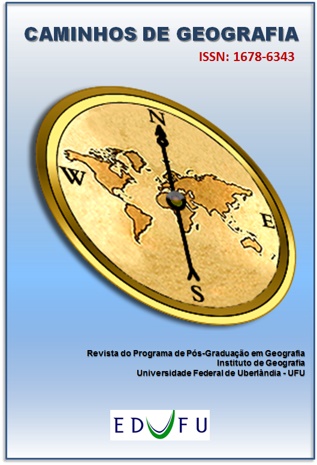LANDSLIDES IN FORESTED SLOPES IN THE MÃE LUZIA RIVER WATERSHED, TREVISO – SANTA CATARINA STATE, BRAZIL
DOI:
https://doi.org/10.14393/RCG238658387Keywords:
Forests, Fires, Use of the soil, Mass movementsAbstract
The state of Santa Catarina has a vast history of mass movements, especially shallow translational landslides. The Mãe Luzia River Basin, located in the municipality of Treviso, drains 22.39 km2 of the escarpment of the Southern Brazilian Plateau, and has records of landslides on slopes. The objective was to relate mass movements with past agricultural practices and the occurrence of fire in the study area. For this, the relationship between the forest and the water cycle, root system and slope stabilization was investigated, as well as soil-repellency surfaces, formed from forest fires. From aerial photographs from 1957, it was possible to correlate space-time movements of mass with anthropic practices of the past. As a result, 337 landslide scars were interpreted, mostly on the vegetation class in an advanced successional stage, which had, however, undergone selective cutting of trees and forest fire. It was concluded that the land use practices developed intensively, contributed to the suppression of large trees, which in theory, would anchor the soil and assist in its stabilization. Thus, forested areas that have suffered anthropic interference are less effective in containing mass movements, although it contributes to reducing their frequency.
Downloads
Downloads
Published
How to Cite
Issue
Section
License
Copyright (c) 2022 William de Oliveira Sant Ana, Álvaro José Back, Gean Paulo Michel, Nilzo Ivo Ladwig, Danrlei De Conto, Mauro dos Santos Zavarize

This work is licensed under a Creative Commons Attribution-NonCommercial-NoDerivatives 4.0 International License.
Autores que publicam nesta revista concordam com os seguintes termos: a) Autores mantém os direitos autorais e concedem à revista o direito de primeira publicação, com o trabalho licenciado sob a Creative Commons Atribuição-NãoComercial-SemDerivações 4.0 Internacional. b) Autores têm permissão e são estimulados a publicar e distribuir seu trabalho online (ex.: em repositórios institucionais ou na sua página pessoal), já que isso pode gerar alterações produtivas, bem como aumentar o impacto e a citação do trabalho publicado. c) Em virtude de aparecerem nesta revista de acesso público, os artigos são de uso gratuito, com atribuições próprias, em aplicações educacionais e não-comerciais.











